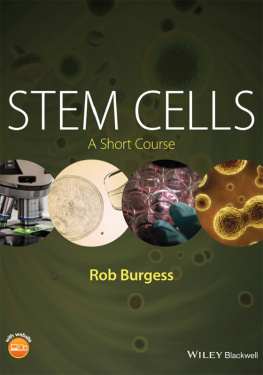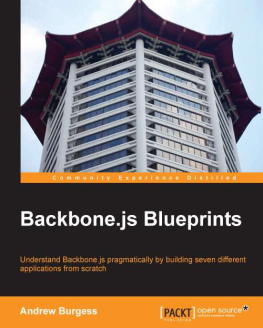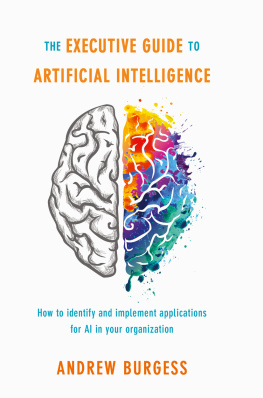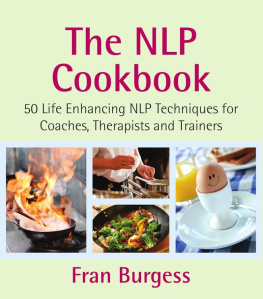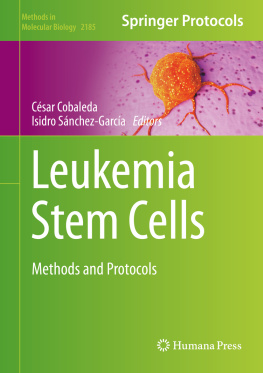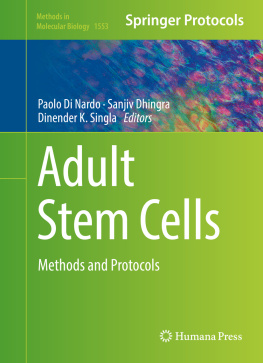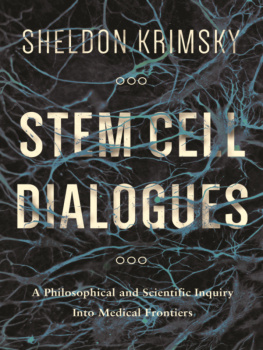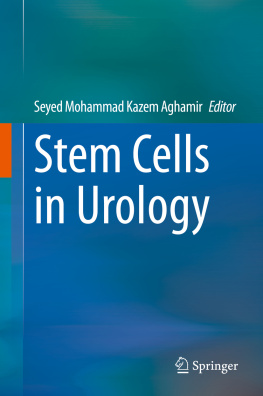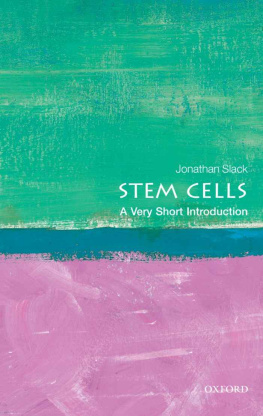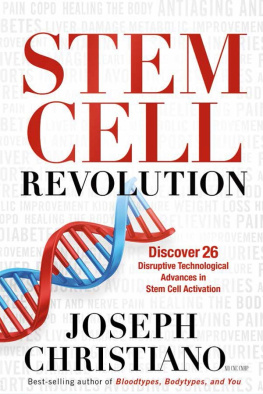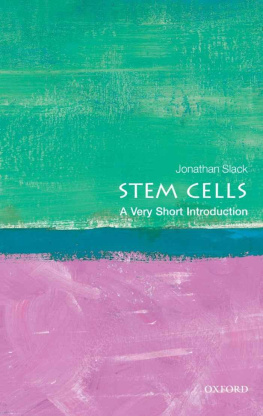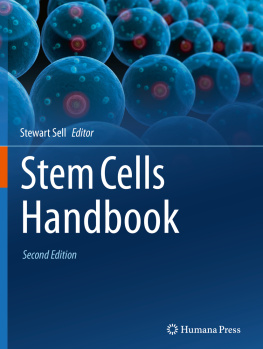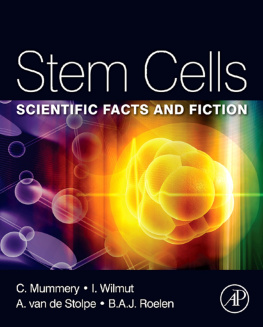Burgess - Stem cells a short course
Here you can read online Burgess - Stem cells a short course full text of the book (entire story) in english for free. Download pdf and epub, get meaning, cover and reviews about this ebook. City: Hoboken;New Jersey, year: 2016;2015, publisher: John Wiley & Sons, Incorporated, genre: Home and family. Description of the work, (preface) as well as reviews are available. Best literature library LitArk.com created for fans of good reading and offers a wide selection of genres:
Romance novel
Science fiction
Adventure
Detective
Science
History
Home and family
Prose
Art
Politics
Computer
Non-fiction
Religion
Business
Children
Humor
Choose a favorite category and find really read worthwhile books. Enjoy immersion in the world of imagination, feel the emotions of the characters or learn something new for yourself, make an fascinating discovery.
- Book:Stem cells a short course
- Author:
- Publisher:John Wiley & Sons, Incorporated
- Genre:
- Year:2016;2015
- City:Hoboken;New Jersey
- Rating:3 / 5
- Favourites:Add to favourites
- Your mark:
- 60
- 1
- 2
- 3
- 4
- 5
Stem cells a short course: summary, description and annotation
We offer to read an annotation, description, summary or preface (depends on what the author of the book "Stem cells a short course" wrote himself). If you haven't found the necessary information about the book — write in the comments, we will try to find it.
Stem cells a short course — read online for free the complete book (whole text) full work
Below is the text of the book, divided by pages. System saving the place of the last page read, allows you to conveniently read the book "Stem cells a short course" online for free, without having to search again every time where you left off. Put a bookmark, and you can go to the page where you finished reading at any time.
Font size:
Interval:
Bookmark:

Rob Burgess

Copyright 2016 by John Wiley & Sons, Inc. All rights reserved.
Published by John Wiley & Sons, Inc., Hoboken, New Jersey.
Published simultaneously in Canada.
No part of this publication may be reproduced, stored in a retrieval system, or transmitted in any form or by any means, electronic, mechanical, photocopying, recording, scanning, or otherwise, except as permitted under Section 107 or 108 of the 1976 United States Copyright Act, without either the prior written permission of the Publisher, or authorization through payment of the appropriate per-copy fee to the Copyright Clearance Center, Inc., 222 Rosewood Drive, Danvers, MA 01923, (978) 750-8400, fax (978) 750-4470, or on the web at www.copyright.com. Requests to the Publisher for permission should be addressed to the Permissions Department, John Wiley & Sons, Inc., 111 River Street, Hoboken, NJ 07030, (201) 748-6011, fax (201) 748-6008, or online at http://www.wiley.com/go/permission.
Limit of Liability/Disclaimer of Warranty: While the publisher and author have used their best efforts in preparing this book, they make no representations or warranties with respect to the accuracy or completeness of the contents of this book and specifically disclaim any implied warranties of merchantability or fitness for a particular purpose. No warranty may be created or extended by sales representatives or written sales materials. The advice and strategies contained herein may not be suitable for your situation. You should consult with a professional where appropriate. Neither the publisher nor author shall be liable for any loss of profit or any other commercial damages, including but not limited to special, incidental, consequential, or other damages.
For general information on our other products and services or for technical support, please contact our Customer Care Department within the United States at (800) 762-2974, outside the United States at (317) 572-3993 or fax (317) 572-4002.
Wiley also publishes its books in a variety of electronic formats. Some content that appears in print may not be available in electronic formats. For more information about Wiley products, visit our web site at www.wiley.com.
Library of Congress Cataloging-in-Publication Data is available.
ISBN: 978-1-118-43919-7
To my wife, Jane, daughter, Zoie, son, Bobby, mother, Lola, and father, Bob
My justification for writing this book comes from a thorough review of the scientific literature currently published in the area of stem cell research. While an enormous body of knowledge exists in this field, there has yet to be a comprehensive college-level textbook that thoroughly and properly addresses the material in a manner that allows for the student to grasp, retain, and get excited about the discipline. Many works highlight unique or ground-breaking findings or delve into the broader concept of stem cell identity, function, and usefulness to man, yet they do not address the field with the all-inclusive effort needed to give the student a strong understanding of the need for stem cell research. Second, most literary works in the area of stem cell research gloss over or fail to drive home key specific findings, definitions, concepts, and details that are required to give the student a thorough understanding of stem cells and their impact on therapeutics and medicine. Third, when key stem cell research and discoveries are described in teaching materials, the researchers involved are often not mentioned or given the proper credit for their findings. Thus, I have compiled a breakdown of stem cell research that highlights the history behind the discipline, emergent groundbreaking findings such as the discovery of embryonic stem cells and induced pluripotency, and given credit where credit is due. Within the body of each chapter, I have included Focus Boxes on key researchers and Case Studies highlighting seminal findings in stem cell research. For each Focus Box or Case Study, I have tried to provide an example of a true leader in the field or groundbreaking study. To ensure that the student absorbs the material at the end of each chapter, I have included a detailed summary of the text, key terms, review questions, and all cited references. The key term definitions and answers to select review questions can be found at the website www.stemcelltextbook.com. It is highly encouraged that the professors utilize the summaries, key terms, and review questions as study materials and ask students to periodically review the corresponding website for continuously updated information related to this text in particular and to the field of stem cell research in general.
The book is organized into eight chapters that gradually step from the history of stem cell research to the basic concepts behind cell culture, key stem cell-related findings, and applications of stem cells in drug discovery and therapy. Key topics I have addressed include:
- The history, early studies, and the rapid advancement of the field of stem cell research
- The basic requirements for a cell to be considered stem in nature
- Types of stem cells and their capacities to differentiate into various mature lineages
- Breakthroughs in early stem cell-based therapeutics endeavors
- The differences between embryonic and adult stem cells at the basic and translational research levels
- Induced pluripotency
- Implications of stem cells on diagnostics and drug screening efforts
- Stem cell-based cloning and its ethical considerations
Chapter 1 begins with an overview of the first concrete contemplation of the existence of stem cells in the early 1900s, and how that hypothesis rapidly evolved into accepted theory. It transitions by slowly introducing the concept of stemness via seminal discoveries in hematopoiesis, mouse, and human embryonic development, and even iPS technology. Optimization of cell culture conditions for various stem cell types and advances in cloning that utilizes stem cells as source material are also discussed. There is also a special section on reproductive verses. therapeutic cloning outlining the discovery of Dolly the sheep. Several examples of the use of stem cells as possible therapeutic regimens, such as for spinal cord injury repair, are also described. The chapter closes with a briefing on the limitations of stem cells in therapeutics due to immunorejection and efforts to save endangered species through iPS cell manipulation.
Chapter 2 transitions from the history of stem cell research and seminal findings discussed in Chapter 1 to how these studies were carried out. With an emphasis on historical discoveries and advancements, it reviews and describes key derived cell lines such a Hela cells and outlines the early refinement of general cell culture techniques. An important example described in this context is the discovery of hybridoma technology. Basic cell culture technology is expanded upon to describe the optimal conditions needed to either maintain stem cell pluripotency or drive differentiation towards one or more particular cellular fates. A basic overview of vertebrate embryonic development also provides a foundation for the next section, which is an outline and description of the basic various potency properties of stem cells. The most widely studied types of stem cells are also discussed, with particular attention paid to embryonic stem cellsgiven the recent advancements in, and controversy surrounding, this field of research. Signaling and transcriptional control pathways regulating stem cell fate are also described for each major stem cell type as they apply to cell culture applications. The chapter concludes with a brief introduction to stem cells as therapeutic or drug discovery medical platforms.
Next pageFont size:
Interval:
Bookmark:
Similar books «Stem cells a short course»
Look at similar books to Stem cells a short course. We have selected literature similar in name and meaning in the hope of providing readers with more options to find new, interesting, not yet read works.
Discussion, reviews of the book Stem cells a short course and just readers' own opinions. Leave your comments, write what you think about the work, its meaning or the main characters. Specify what exactly you liked and what you didn't like, and why you think so.

